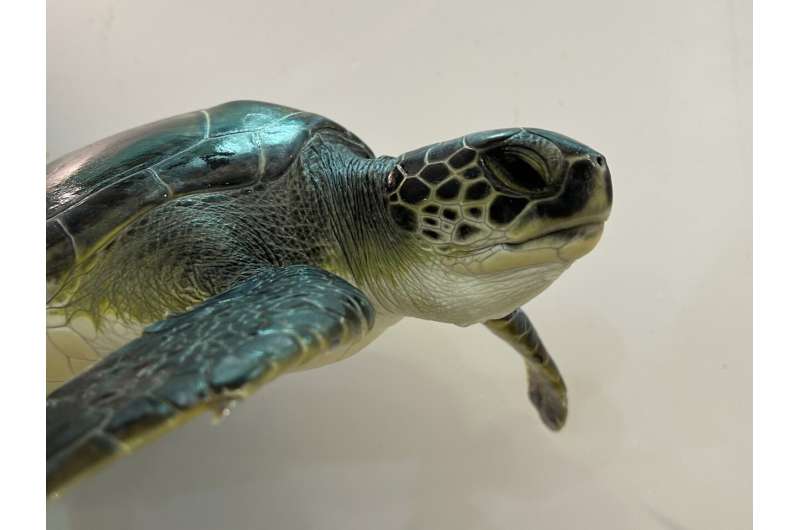This article has been reviewed according to Science X's editorial process and policies. Editors have highlighted the following attributes while ensuring the content's credibility:
fact-checked
peer-reviewed publication
trusted source
proofread
Mediterranean green turtles' nesting range will expand under warming climate, modeling study finds

Rising global temperatures could lead to an increase in the nesting range of green turtles in the Mediterranean Sea, according to a modeling study published in Scientific Reports. Under the worst-case climate scenario, the nesting range could increase by over 60 percentage points, spreading west from the current area to include much of the North African, Italian, and Greek coastlines.
Human-caused climate change has caused sea surface temperatures to increase globally, with severe impacts on some marine life. Sea turtles are potentially particularly susceptible, as the sex of their offspring is dependent on incubation temperature. Although previous research has investigated the effects of climate change on several different populations of sea turtles worldwide, there has been very little research into the green turtle (Chelonia mydas) population in the Mediterranean Sea.
Chiara Mancino and colleagues developed a model for predicting the suitability of a point on the Mediterranean coastline as a green turtle nesting location. The authors first assessed the predictive power of the model by evaluating it against 178 confirmed nesting locations, recorded between 1982 and 2019 and mainly limited to Turkey and Cyprus in the eastern Mediterranean.
They found that the model had a very good predictive power, and that sea surface temperature, sea salinity, and human population density most affected the suitability of a specific location as a nesting site.
The authors then modeled how four different greenhouse gas emission scenarios could affect the nesting range of green turtles in 2100. They found that progressively worse climate scenarios were associated with greater increases in the nesting range in the Mediterranean.
Under the worst-case climate scenario modeled, the nesting range increased by 62.4 percentage points, and included the North African coastline to Algeria, much of Italy and Greece, and the south Adriatic Sea.
However, the authors warn that this increase in green turtle nesting range in the heavily populated central and western Mediterranean would bring them into increased contact with humans and urbanized beaches, which could negatively affect nesting success. Future research should investigate how such effects can be mitigated.
More information: Chiara Mancino, Increase of nesting habitat suitability for green turtles in a warming Mediterranean Sea, Scientific Reports (2023). DOI: 10.1038/s41598-023-46958-4. www.nature.com/articles/s41598-023-46958-4
Journal information: Scientific Reports
Provided by Nature Publishing Group




















